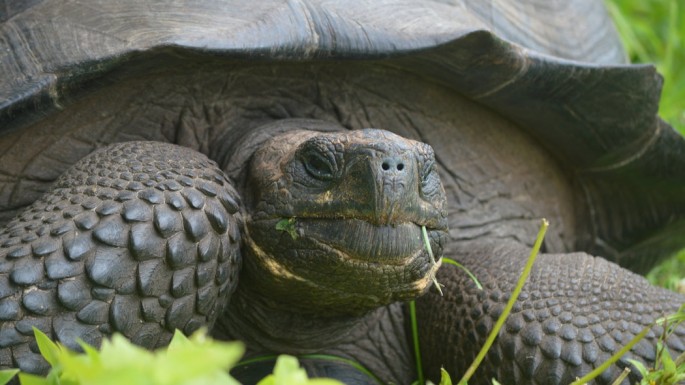A study published Wednesday in the journal PLOS One revealed that a new species of Galapagos tortoise has been identified in eastern Santa Cruz in the Pacific archipelago; it is named Chelonoidis donfaustoi, after Fausto Llerena Sanchez (Don Fausto), a retired 75-year-old park ranger who worked for 43 years trying to save endangered tortoises.
There is a main tortoise colony on Santa Cruz, but this newly discovered species does not appear to have much in common or relate with the native tortoises on the island. Although scientists believe two different species do not breed with each other, genetic research indicate the two species on Santa Cruz might have mated in times past.
"Now the genetics has put some real evidence that says the simple explanations don't hold, that some of the islands have tortoises that arrived at different times from different islands," said Oliver Ryder, director of genetics at the San Diego Zoo's Institute for Conservation Research, who was not involved in the new discovery. "The recognition of this separate evolutionary history I think will be very important."
Chelonoidis donfaustoi lives in the arid, lava-dominated lowland known as Cerro Fatal where about 250 of them live, while nearly 2,000 other tortoises inhabit the raised southwestern area of the island known as La Reserva.
Adelgisa Caccone, a senior research scientist at Yale University and the senior author of the study said the tortoises at Cerro Fatal are smaller with pointier shell plates, but not so pronounced in those living on La Reserva. And while the Cerro Fatal tortoise evolved half a million years ago, those on La Reserva evolved almost two million years ago.
Peter Paul van Dijk, a tortoise expert who had nothing to do with the study disclosed that the results of the study indicate the Chelonoidis donfaustoi drifted to Santa Cruz following a "once-in-a-decade or once-in-a-century extreme weather event" like a hurricane or typhoon.
"The next step is to do a big census and figure out what the threats are," Dr. Cayot said. "We still don't know a lot about them."



























